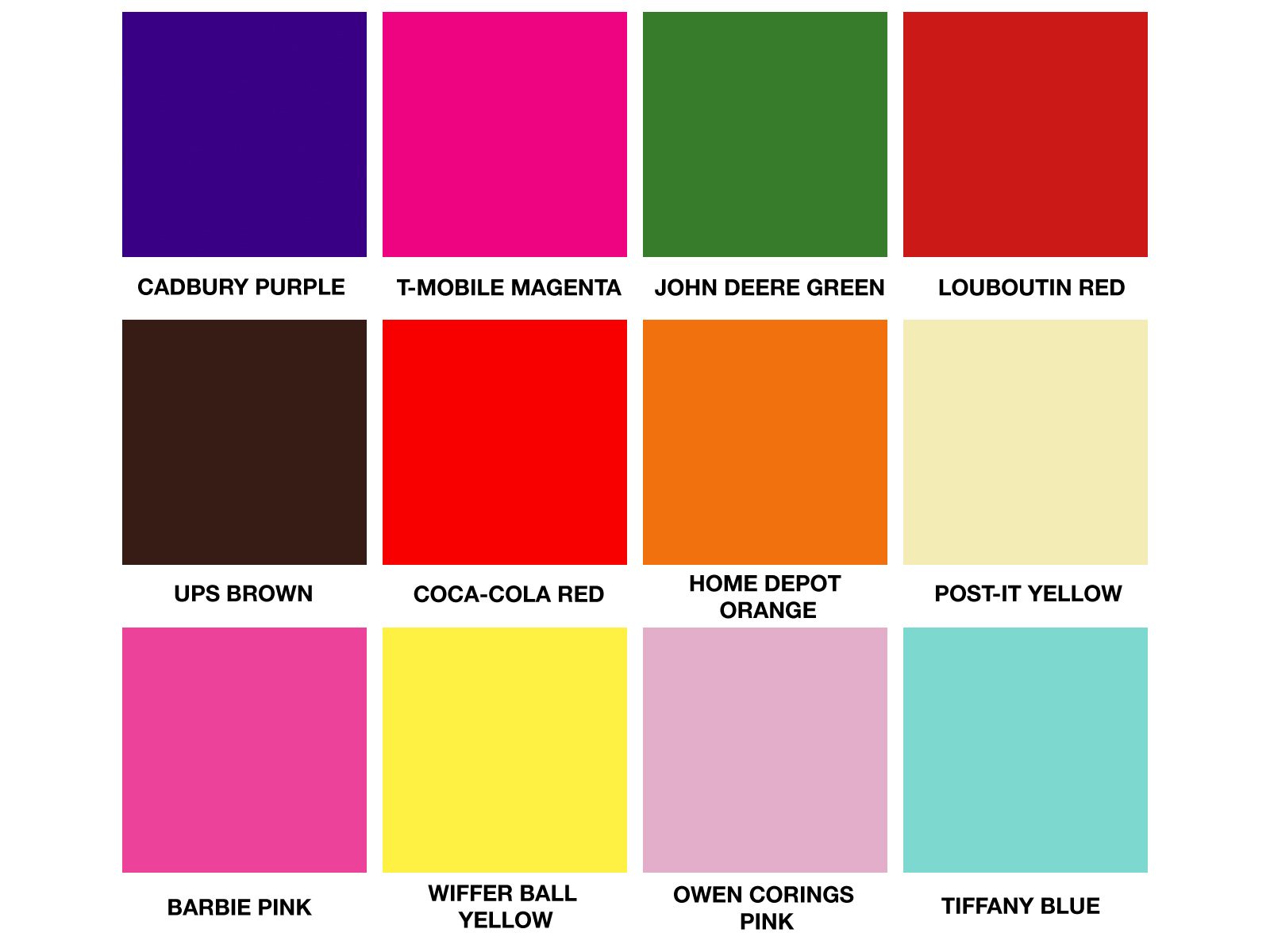Why You Can’t Always Trademark a Color
The complicated process of legally “shotgunning” a particular shade.

Cheerios-box yellow, it turns out, isn’t legally “a thing.” That’s according to an August 22 ruling from the U.S. Patent and Trademark Office after nearly two years of attempts from its parent company, General Mills, to register the precise shade of sunshine yellow on its boxes of “toroidal-shaped, oat-based breakfast cereal” as a trademark.
It’s not impossible to trademark a color. Tiffany blue, for instance, can’t be used by any other jewelry company, nor Coca-Cola red by any drinks vendor. But there are specific restraints: Trademarks have to specifically “designate the source of a good,” write Kal Raustiala and Chris Sprigman on the Freakonomics blog. Because of that, colors can be trademarked only if they specifically “identify the source of a product”—and not perform any other function.

This is where Cheerios is ineligible, the Trademark Trial and Appeal Board said, because many breakfast cereals also sell their grainy goods in yellow boxes. Quartz described yellow as a “kind of lingua franca in cereal box design”: It appears variously on Kellogg’s Corn Pops, Trader Joe’s Joe’s O’s Toasted Whole Grain Oats, Post’s Honey Comb, and Nature’s Path Honey’d Corn Flakes, among others. If General Mills had been successful, they alone would have had the right to yellow packaging, likely forcing their competitors to change.
Yellow packaging on cereal boxes, Judge Anthony R. Masiello writes, has become so ubiquitous that customers are “likely to view yellow packaging simply as eye-catching ornamentation customarily used for the packaging of breakfast cereals generally.”
Clashes over color are nothing new. In the United Kingdom, Cadbury and Nestlé continue to squabble over the definitive rights to a particular shade of royal purple. (Cadbury has a 1995 trademark on the color which could be invalidated if Nestlé contests it.) The high-end shoemaker, Christian Louboutin, is currently attempting to trademark the cherry-red soles on its shoes worldwide. And app companies PayPal and Pandora are similarly coming to blows over the blue in each of their logos.
In the art world, too, who can use what color has proven contentious, even if the legal battleground is slightly different. A fight continues to brew between high-profile artist Anish Kapoor and fellow Brit Stuart Semple. Kapoor ruffled feathers when he obtained the exclusive rights to the pigment Vantablack, produced by British company NanoSystems. It is the blackest substance known in the world, originally developed for military purposes and astronomy equipment. Semple retaliated, on behalf of all fellow artists forbidden from using the pigment, by producing the “world’s pinkest pink,” which he sells for no profit on his website. Despite a customer guarantee that “the paint will not make its way into the hands of Anish Kapoor,” Kapoor did manage to obtain some, upsetting Semple and other artists in the process.
The German patent attorney Dr. Ralf Sieckmann has compiled a fascinating compendium of “non traditional trademarks,” including “smell marks,” “tactile marks,” and “sound marks.” These throw up some curious examples of what can, and cannot, be trademarked. In 1996, for instance, the European Union gave Santa Aromatics the exclusive right to make tennis balls smell like freshly cut grass. In Germany, “sound marks” are almost always short jingles. In the United States, the process is far more complicated and usually limited to specific sounds, rather than short, seemingly recognizable tunes.
This is General Mills’s second unsuccessful attempt to claim yellow for their own—but they say it won’t be the last. “We are working to protect the iconic yellow color for our Cheerios box,” brand media relations manager Mike Siemienas told Quartz. Kellogg’s had better watch its back.









Follow us on Twitter to get the latest on the world's hidden wonders.
Like us on Facebook to get the latest on the world's hidden wonders.
Follow us on Twitter Like us on Facebook